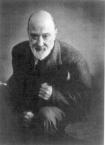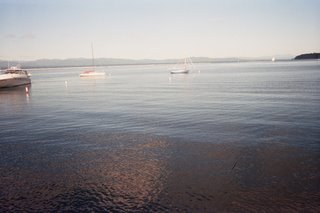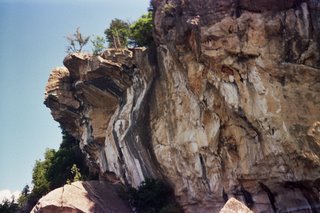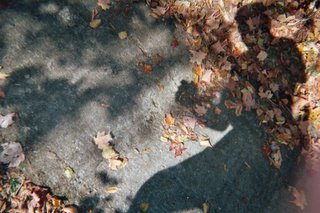
On a gray Sunday morning in November, I found myself reading in Halsey Stevens' THE LIFE AND MUSIC OF BELA BARTOK. Bartok spent a summer in a house in Berlin, Vermont, a few miles from where I live, and many times I've run along the same road he walked.
On this particular gloomy morning I felt suddenly inspired to make a piece of music; I kept coming back to the image of Bartok walking along a wooded country road in Vermont. I quickly assembled a signal path, patching together delay devices, mixer, EQ, and gated reverb: building a sonic space for the music to happen within.
I've long been taken with Bartok's unfinished deathbed piece, the VIOLA CONCERTO, commissioned and first performed by William Primrose, completed and orchestrated by Tibor Serly. (In particular, the transparent elegance of the "Adagio Religioso" section has haunted me.) At first it disturbed me to read Stevens' statement that Bartok left of the piece only its "torso"; but then I reminded myself: that is, after all, where the heart is.
I began with a technique I seldom use, that of using samples from recordings-- in this case a scratchy old record of Primrose playing the VIOLA CONCERTO. As I placed the short sections within the sonic landscape made by the signal path, I manipulated them, organizing the loops and the spaces between them, until they offered what seemed a strange and dreamlike perspective on Bartok's work, evoking in me the feeling of a wordless pilgrimage along a path: with Bartok himself; with the Viola master Primrose; with my friend composer Dennis Darrah (who has used this technique of collaging loops to great effect in his own work, RECOMBINANT THEORY.)
As the piece unfolded and played back, I pulled out my John Goss-modified Silvertone lap steel guitar, and added an improvisation, the whole thing going in real-time to my hard drive as a take. Listening back later that day, I named the piece NOVEMBER PATH-FOR DENNIS DARRAH.
Here it is:
http://www.jukeboxalive.com/reports.php?album=1667407
Now, in mid-December, I've been listening in the dark mornings to two profound works of music. The first is another late Bartok work, the SONATA FOR SOLO VIOLIN. It's a stark and thorny piece, but one rich with twists and turns, with deep resonances that are awe-inspiring, coming as they do from a small instrument that can produce only limited harmonic material. Bartok begins with JS Bach's great solo violin partitas and sonatas as a springboard, and also works with his own deep understanding of Hungarian music; but, as in all of Bartok's late works,there is something complex and entirely personal to be found in the structures and developments of the material.
The other piece, Olivier Messiaen's VINGT REGARDS SUR L'ENFANT JESUS, for solo piano, might seem at first glance-- and listening-- to be of an entirely different species. Lush with Messaien's post-Debussy harmonic coloration, and with themes and ideas of Christian iconography-- the Star, the Cross, The Virgin, The Infant Christ-- woven from birdsong and modal/rhythmic motifs, it builds an entire world, where Bartok's SONATA seeks only to build deep forms within sound.
But the similarities between these pieces lie in their elemental starkness. Both were composed in 1944, within the darkness of a world war that would soon end. And both seem to offer the experience of music as light in that darkness. Messiaen crafts his light from deep faith, and the assembly and juxtaposition of forms, building a cathedral or tabernacle with tones. Bartok's light, carried by the spareness of a solo violin, is a different kind of miracle in sound: the unfolding of forms, organic and ever-changing; like something alive that sprouts in sun-warmed earth.
And now I put away this weblog for the year 2006. I hope to return in mid-January. Thank you for reading.












